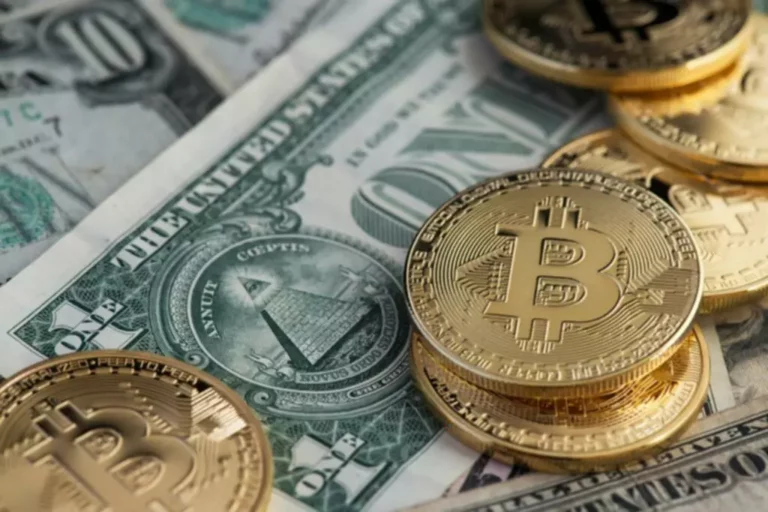They ensure that validators are compensated for their efforts in processing transactions and sustaining the safety of the blockchain. High Ethereum gas charges have introduced challenges for DeFi customers, as they’ll considerably increase the value of executing transactions and interacting with decentralized purposes Gas Fees in Crypto (dApps). This has led to the exploration of layer 2 scaling solutions and various blockchains with decrease fees.
- The priority fee is a tip to the validator that chooses a transaction—the more you tip, the higher the probabilities are that your transaction shall be processed faster.
- Setting max fees cannot solely allow you to spend less on fuel, however it can also provide you with peace of thoughts that you will not be paying more than you have to on a specific transaction.
- On Ethereum, fuel charge trackers that follow the gas price in real-time are also used.
- The fuel price is the amount you pay per unit of fuel, measured in gwei, and it varies with community demand.
What Are Ethereum Gasoline Fees? How Eth Community Fees Work
And these token rewards, as already defined, are generated by way of fuel charges. Although you can not instantly write off Ethereum gas charges, you should use them to reduce the price foundation of crypto swaps. The main Proof of stake value-add of sharding will be a dramatic discount within the gasoline fees required to transact on Ethereum.
How Does Fuel Work And Why Is It Important?
He holds certifications from Duke University in decentralized finance (DeFi) and blockchain know-how. Ethereum fuel fees are lowest on each weekends and in the course of the night for the United States. For example, if you had been to promote an NFT (non-fungible token) on a market like Uniswap, your fuel charges would most likely solely be a couple of dollars. In addition to this base payment, additionally, you will must pay a priority charge, or ‘tip’, to the validator. It refers to the maximum amount of gas that can be spent on a specific transaction.
Gasoline Fees Defined: A Deep Dive Into Ethereum’s Transaction Fee Structure

“Gas” represents the computational energy needed to carry out actions on the Ethereum network, whether sending ETH, executing sensible contracts, or using decentralized purposes (dApps). Each action on Ethereum requires a particular amount of fuel, with extra advanced transactions needing extra fuel. Users pay fuel fees in ETH, Ethereum’s native cryptocurrency, with the total cost primarily based on the gas used and the gas value at that second. ETH gas fees are the transaction charges paid to validators on the Ethereum network for processing transactions and executing good contracts. These charges are calculated based mostly on the complexity of the transaction and the demand on the network whereas processing, with larger demand resulting in increased charges.
Cryptocurrency Trading Pairs: A Beginner’s Guide
Taking your exercise off the main chain is doubtless considered one of the best methods to keep your fees low. A transaction charge is just like the payment you pay for a cash wire transfer. As the image above shows, the average Ethereum community charges have been on the rise since the starting of 2021 because of the growing reputation of DeFi applications.
MoonPay permits you to swap crypto cross-chain with competitive rates, directly from your non-custodial wallet. However, Ethereum’s switch to PoS was essential for deploying sharding — a mechanism in which a quantity of facet chains are deployed to offload transactions from the mainnet. Blockchain social media platforms represent a fast-developing sector, and far of the expansion is going down on the Ethereum network. While Bitcoin and Ethereum are sometimes compared to one another, the two fulfill completely different — though often complementary — roles inside the blockchain ecosystem.
Instead of a purely auction-based system where users bid on gas prices, a base fee is now set mechanically, which adjusts based mostly on network demand. This mechanism aims to make gasoline fees extra predictable and cut back spikes in transaction prices. Ethereum fuel fees are the transaction charges customers pay on the Ethereum blockchain to conduct transactions and execute sensible contracts. Users pay this charge in Ether (ETH), while the network nodes earn a fraction of fees for validating transactions by way of Ethereum’s Proof of Stake (PoS) consensus mechanism. While variations in fuel charges could also be challenging for model spanking new Ethereum customers to master, they’re a boon for the security of the community. A primary cause that many blockchains preserve transaction charges is to prevent malicious actors from spamming the network, as a result of the cost of trying to do so can turn into too high to be worthwhile.
The gas restrict is the maximum amount of gas charged for an instruction (transaction, operation). It helps to keep away from overspending—for occasion, due to an error in a sensible contract or else. Essentially, it prevents you from spending an infinite amount of gas on one operation. Gas acts as a useful resource allocation software, stopping abuse and ensuring truthful use of the network. By requiring users to pay for the computing energy their transactions devour, Ethereum can fend off spam and denial-of-service assaults, maintaining general community security. Even although Ethereum has transitioned to a new consensus model with The Merge, fuel stays an necessary a half of the network.
Fees are decided by the amount of network traffic, the provision of validators, and the demand for transaction verification. Gas fees are used on the Ethereum blockchain and network to incentivize customers to stake their ETH. Staking works to secure the blockchain because it discourages dishonest habits. For staking their ETH, house owners are given small payments as a reward for serving to to secure the blockchain and help it perform.
For this purpose, you could see gas charge trackers and gas payment calculators known as gwei trackers and gwei calculators, respectively. As Ethereum gasoline fees have risen, so has the rise of Layer-2 options that lower gas fees by processing batches of transactions off-chain previous to settling them on the Ethereum mainnet. Examples of notable scaling options for Ethereum include dYDX, Loopring, Arbitrum, Immutable X, Polygon, Optimism, and Skale Network. As the Ethereum community continues to develop and evolve, it’s probably that modifications might be made to the charge construction to improve usability and accessibility. Furthermore, excessive fuel fees can lead to a lack of customers to competing blockchains with lower charges. This is very true for decentralized applications (dapps) and other platforms that rely closely on transaction throughput.

As a result, base charges have persistently increased as a end result of growing demand for the Ethereum blockchain. Gas fees are small payments required to process transactions and execute sensible contracts on the Ethereum community. These charges compensate validators for their computational sources, guaranteeing community security and performance. Ethereum gasoline fees are sometimes higher in comparability with other blockchains like Bitcoin and Binance Smart Chain.
Ethereum fuel fees are funds made by users to compensate for the computational energy required to course of and validate transactions on the Ethereum network. Learn what Ethereum gas fees are, how they work, and why they are necessary. Find out how one can calculate gasoline fees, the factors influencing them, and methods to manage and cut back these costs effectively. Since Ethereum’s London Hard Fork implementation on August 5, 2021, gas fees on the community have utilized a base fee and a tip payment — or precedence payment. The base payment is the minimum price for gas and is set algorithmically primarily based on Ethereum block house demand. For most users, counting on gwei as the base unit is the preferred means of tracking present fuel fees.
This fuel payment discount will dramatically improve the network’s capability to scale. Let’s dive into the mysterious Ethereum world and discover how gas works with Changelly. We’ll speak about the Ethereum digital machine, gasoline limits, and gwei sub-units, then talk about miners’ rewards for conducting transactions.
Start your own high-profit forex brokerage in just a few days or scale your existing business with the best-in-class forex software XCritical https://www.xcritical.in/. Get the perfect Turnkey Forex Solutions that will provide your business with efficiency, stability, and maximum profit.
دیدگاهتان را بنویسید